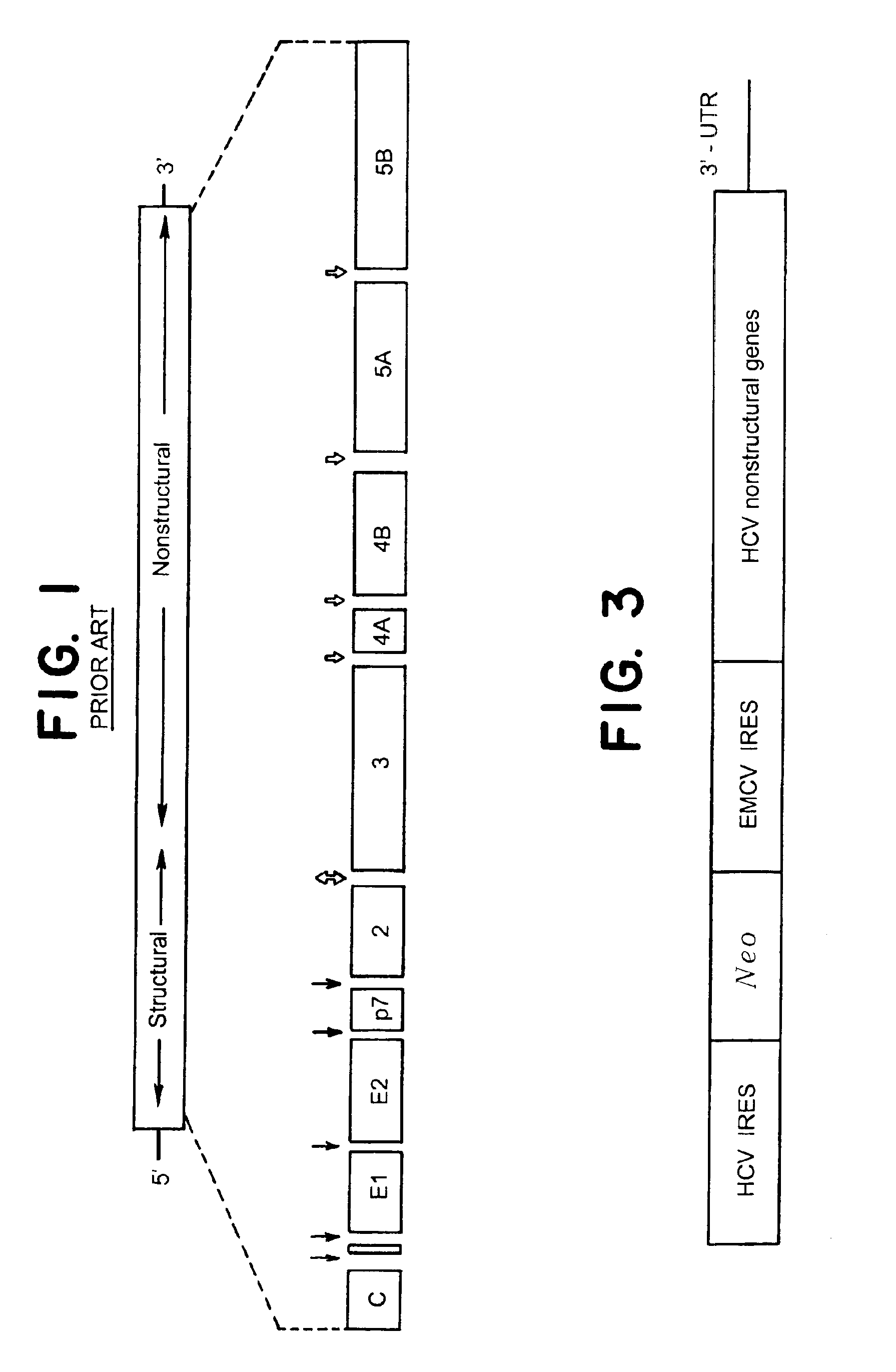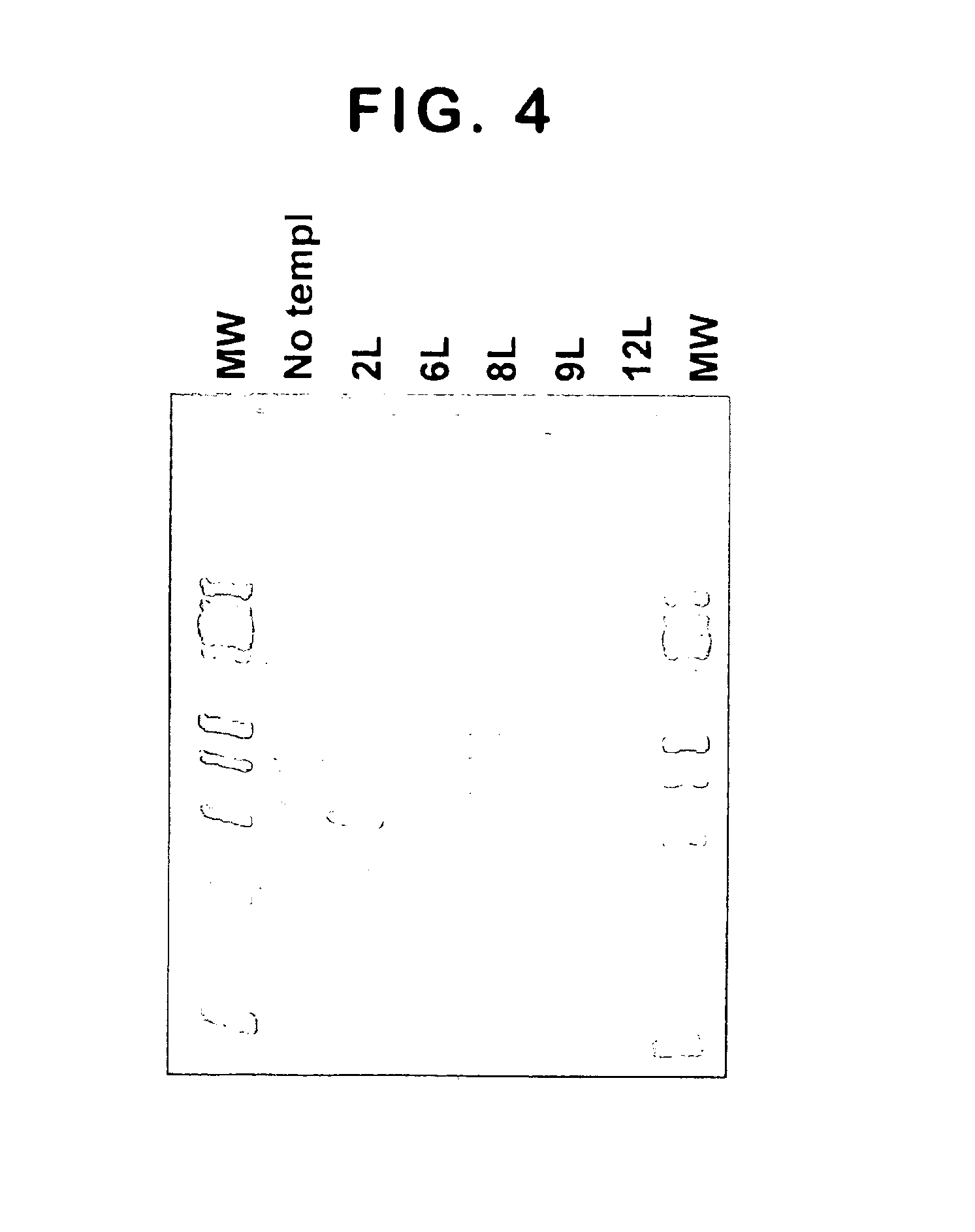Hepatitis C virus constructs characterized by high efficiency replication
a hepatitis c virus and construct technology, applied in the field of recombinant hepatitis c virus (hcv)derived nucleic acids, can solve the problems of difficult maintenance, hampered anti-hcv vaccine development, and inability to routinely obtain primary cell cultures, etc., to achieve efficient propagation and expression and high titer replication
- Summary
- Abstract
- Description
- Claims
- Application Information
AI Technical Summary
Benefits of technology
Problems solved by technology
Method used
Image
Examples
example 1
Generation of Stable Rapidly Growing Huh-7 Hepatoma Cell Lines Which Support Efficient Replication of Subgenomic Hepatitis C Virus RNAs
Materials and Methods
[0122]Generation of subgenomic HCV RNAs. Parental recombinant HCV DNA construct for expression of subgenomic HCV RNAs was produced by Operon Technologies, Inc. (Alameda, Calif.) using the sequence described by Lohmann et al. (Science, 1999, supra).
[0123]Bicistronic HCV-derived DNA fragment I377 / NS3-3′UTR (SEQ ID NO: 1, FIG. 3) was chemically synthesized and inserted into a modified pUC19 vector under the control of T7 promoter to produce expression plasmid pAn / HCVR1. Plasmid DNA was linearized with Sca I and used for in vitro transcription reactions with Megascript T7 In Vitro Transcription Kit (Ambion) according to manufacturer's instructions. After in vitro transcription and DNase treatment (to remove template DNA), RNA was extracted with acid phenol (Kedzierski and Porter, BioTechniques, 1991, 10:210) and used for transfection...
example 2
Screening Assays for Anti-HCV Therapeutics Using HCV-Replicating Cell Clones of the Present Invention
[0147]In the identified efficiently growing “adapted” Huh-7 cell clones containing replicating recombinant HCV genomes, conditions are optimized for cell growth and HCV RNA replication. The timing of exposure to test compounds is determined based on the kinetics of HCV RNA accumulation and / or decline in the absence of the selective agent, and the effects of various known inhibitors of RNA synthesis. A cell-based assay for HCV genome replication is developed based on all these data. In this assay, candidate compounds are tested for inhibition of HCV RNA replication that is selective with respect to inhibition of cell growth. In particular, shifting of growth rate curves to a lower growth rate in the presence of a test compound indicates that the compound is a potential lead for developing an anti-HCV therapeutic.
[0148]The present invention is not to be limited in scope by the specific...
PUM
| Property | Measurement | Unit |
|---|---|---|
| optical density | aaaaa | aaaaa |
| optical density | aaaaa | aaaaa |
| optical density | aaaaa | aaaaa |
Abstract
Description
Claims
Application Information
 Login to View More
Login to View More - R&D
- Intellectual Property
- Life Sciences
- Materials
- Tech Scout
- Unparalleled Data Quality
- Higher Quality Content
- 60% Fewer Hallucinations
Browse by: Latest US Patents, China's latest patents, Technical Efficacy Thesaurus, Application Domain, Technology Topic, Popular Technical Reports.
© 2025 PatSnap. All rights reserved.Legal|Privacy policy|Modern Slavery Act Transparency Statement|Sitemap|About US| Contact US: help@patsnap.com



